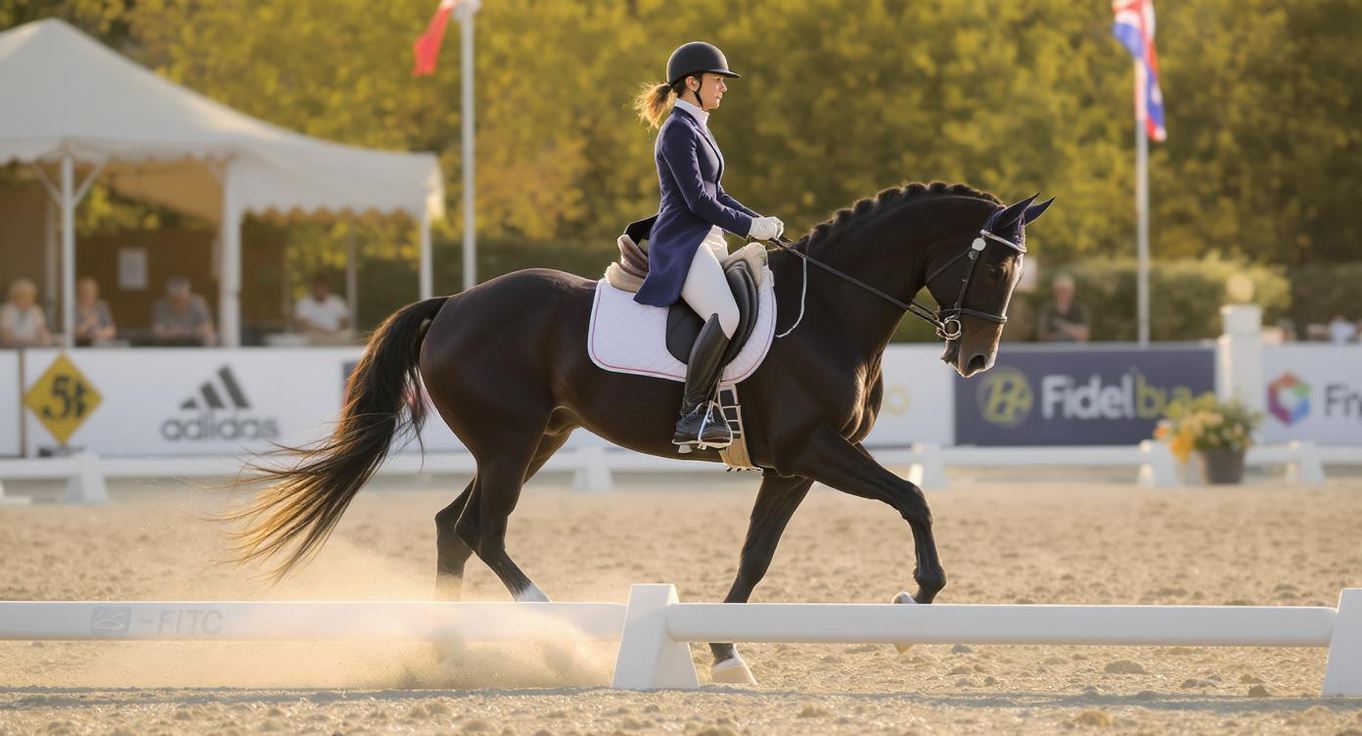Let’s be honest—how many times have you stood in front of your closet, staring at your riding gear, thinking, “This just doesn’t feel like me”? Or worse—how many times have you watched your students or team ride into the arena looking like they raided five different clearance bins? I’ve been there. As someone who’s spent over a decade working with stables, competition riders, and equestrian academies, I’ve seen the difference custom equestrian clothing makes. It’s not just about looking sharp (though that helps). It’s about confidence, performance, and identity.
This isn’t just another article listing fabric types and color options. We’re going deep—into the real considerations no one talks about: the fit quirks that make or break a jacket, the wholesale pitfalls that can sink your budget, and the branding oversights that leave your team invisible at shows. Whether you’re outfitting a single rider or launching a full equestrian uniform line, this guide pulls back the curtain on what actually matters when you go custom. And if you’re sourcing wholesale equestrian apparel, trust me—you’re going to want to read this before placing your next order.
We’ll cover everything from design psychology to stitching tension, with real stories from the field, mistakes I’ve made (and learned from), and strategies that actually work. Because at the end of the day, your gear should work for you—not the other way around.
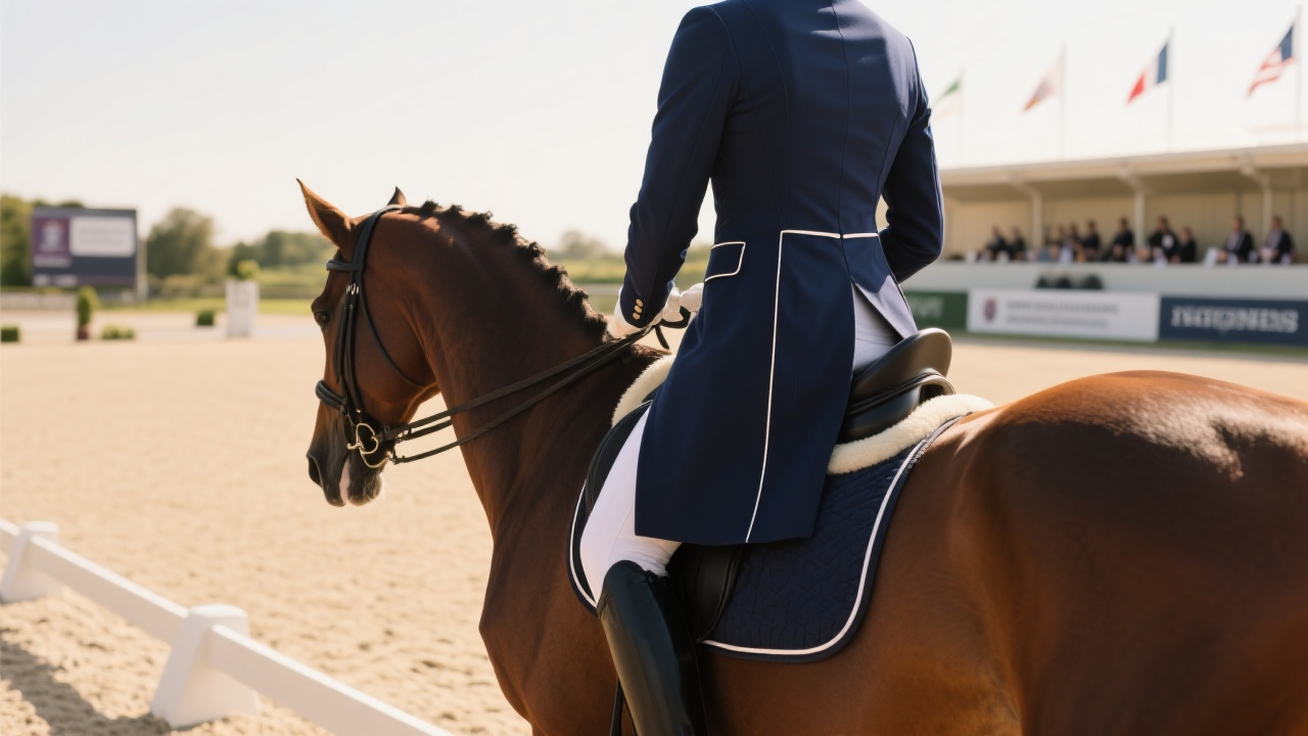
Why “Custom” Isn’t Just a Buzzword Anymore
Back in the day, “custom” meant getting your initials stitched on a jacket someone else designed. Today? It’s a whole different ball game. Custom equestrian clothing isn’t about vanity—it’s about function. It’s about showing up in gear that moves with you, breathes when you need it to, and says, “We mean business.”
I remember working with a dressage academy in Colorado a few years ago. They’d been using off-the-rack breeches and jackets for years. The instructors complained about restricted movement. The students hated how the jackets gaped at the back. And at competitions? They were invisible—just another group in navy and white. We redesigned their entire equestrian uniform system from the ground up: tailored cuts, moisture-wicking four-way stretch, and a deep burgundy that popped under arena lights. The change wasn’t just visual. Riders reported better posture, fewer chafing issues, and—get this—higher scores. One judge even commented on their “professional presentation.”
That’s the power of custom. It’s not just aesthetics. It’s biomechanics, branding, and psychology wrapped into one.
And let’s talk about the elephant in the stable: cost. Yes, custom can be more expensive upfront. But when you factor in durability, fit, and long-term wear, the math flips. A $250 jacket that lasts five seasons is cheaper than three $120 ones that fall apart by year two. Plus, when your team looks cohesive, you attract attention—clients, sponsors, media. That’s ROI you can’t ignore.
The Hidden Cost of “Good Enough” Riding Gear
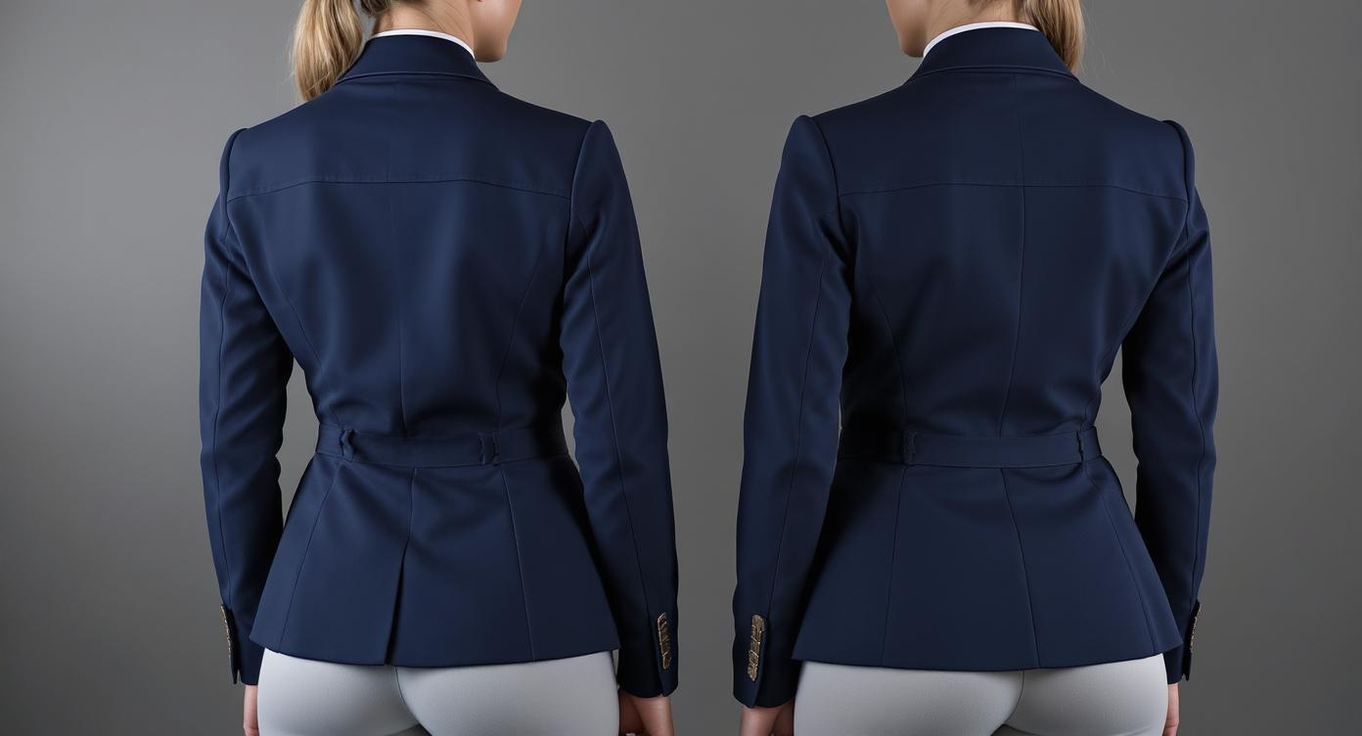
Here’s a hard truth: most equestrian apparel is designed for the average body. But let’s be real—there is no average rider. We come in all shapes, sizes, and riding styles. And when you force a “one-size-fits-most” jacket onto a rider with broad shoulders or a long torso, you’re not just compromising comfort—you’re compromising performance.
I’ve seen riders adjust their seat because their jacket pulls at the shoulders. I’ve seen instructors roll up their sleeves mid-lesson because the cuffs are too tight. These aren’t small things. They’re subtle distractions that add up over time. And in a sport where milliseconds and millimeters matter, that’s a problem.
Off-the-rack gear also limits your branding. Sure, you can add a logo. But if the base design is generic, your identity gets lost. I once worked with a riding school that used bright yellow jackets—great for visibility, but the cut was boxy, the fabric shiny. Parents told me they looked like crossing guards. No pride. No cohesion. Just… yellow.
Custom equestrian clothing fixes that. It starts with your needs, your brand, your riders. It’s not about fitting into a mold. It’s about creating one that fits you.
Function First: What Your Riding Discipline Demands
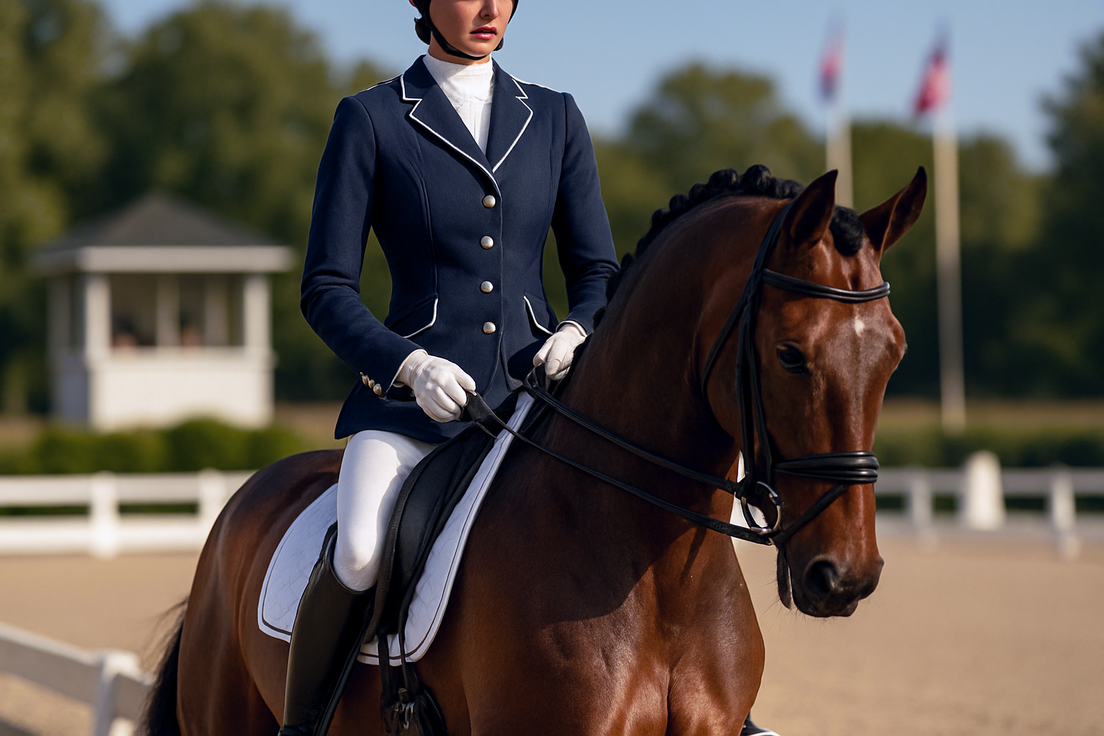
Let’s get practical. Not all riding is the same. And your clothing shouldn’t be either.
If you’re in dressage, you need clean lines, minimal bulk, and a jacket that drapes like a second skin. Movement has to be precise, and your gear should enhance—not interrupt—that flow. I always recommend softshell fabrics with a slight sheen for that polished look. And don’t underestimate the power of a well-placed vent—nothing worse than overheating during a test.
For show jumping, it’s all about mobility and durability. You’re twisting, leaning, stretching. Your jacket needs gussets under the arms, reinforced knees on breeches, and fabrics that can take a tumble (literally). I’ve had clients come back after a fall saying, “The jacket held up, but the stitching on the collar blew out.” That’s a red flag. Reinforced stitching isn’t optional—it’s essential.
Eventers? You need a hybrid approach. Lightweight for cross-country, structured for dressage, and tough enough for anything in between. Layering becomes key. A breathable base, a wind-resistant mid-layer, and a show-ready outer. Custom lets you build that system as a system—not a collection of mismatched pieces.
And for western riders, let’s not forget style and tradition. But even here, modern performance fabrics can make a huge difference. I’ve worked with ranch hands who swear by moisture-wicking denim blends—comfort without sacrificing that classic look.
The point? Your discipline should drive your design. Not the other way around.
Fabric Matters—More Than You Think
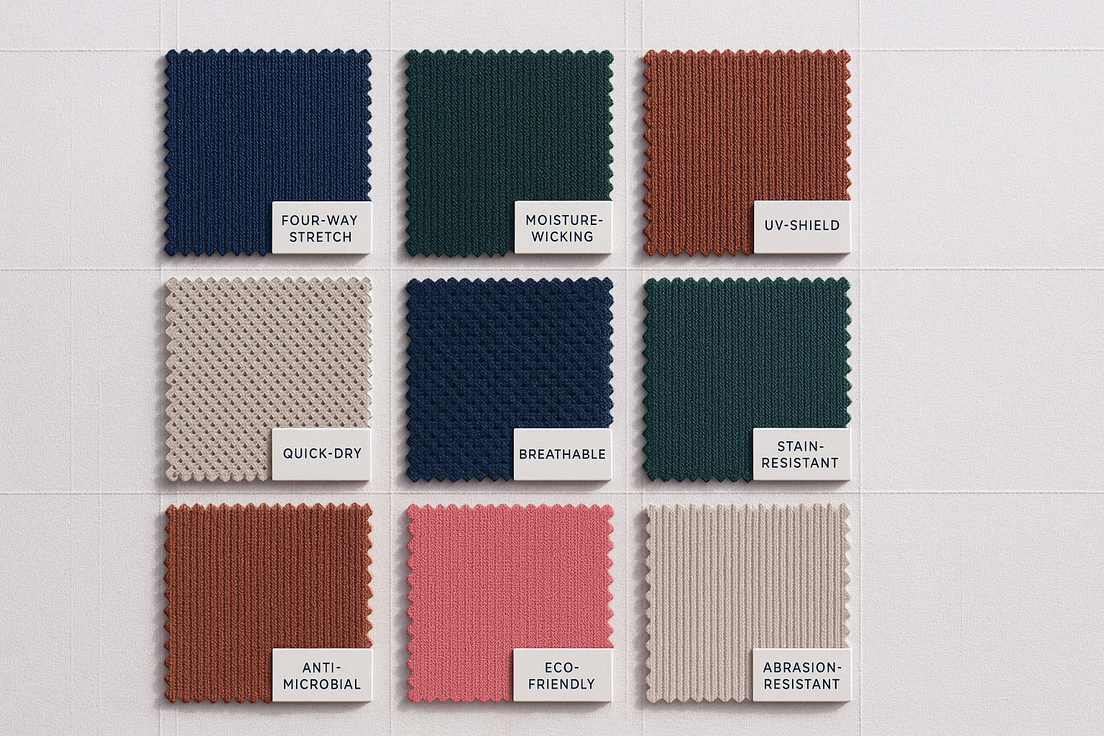
Okay, let’s geek out on fabric for a second.
You’ve probably heard terms like “four-way stretch” or “moisture-wicking.” But do you know what they really mean in practice?
Four-way stretch isn’t just about flexibility. It’s about recovery. A good fabric should stretch when you move, then snap back into place. If it doesn’t, you end up with baggy knees or a jacket that sags after an hour in the saddle. I’ve tested dozens of fabrics, and the best ones? They feel almost alive—moving with you, not against you.
Moisture-wicking is another beast. It’s not just about staying dry. It’s about temperature regulation. In summer, you don’t want to be soaked in sweat. In winter, you don’t want damp fabric chilling you mid-lesson. The right blend—often a mix of polyester, spandex, and sometimes merino wool—pulls moisture away from the skin and disperses it. You stay comfortable, focused, and less distracted.
And let’s talk durability. Some fabrics look great on the hanger but fall apart after two washes. I once had a client order 50 jackets in a “premium” fabric that pilled after three rides. Total disaster. Now, I always insist on abrasion testing and colorfastness reports. If the supplier can’t provide them, we walk away.
At Fexwear, we’ve built relationships with mills that specialize in performance equestrian textiles. We don’t just pick the cheapest option. We test, we sample, we live in the gear before we recommend it. Because your clothing should last. Not just survive.
Fit: The Make-or-Break Factor in Custom Equestrian Clothing
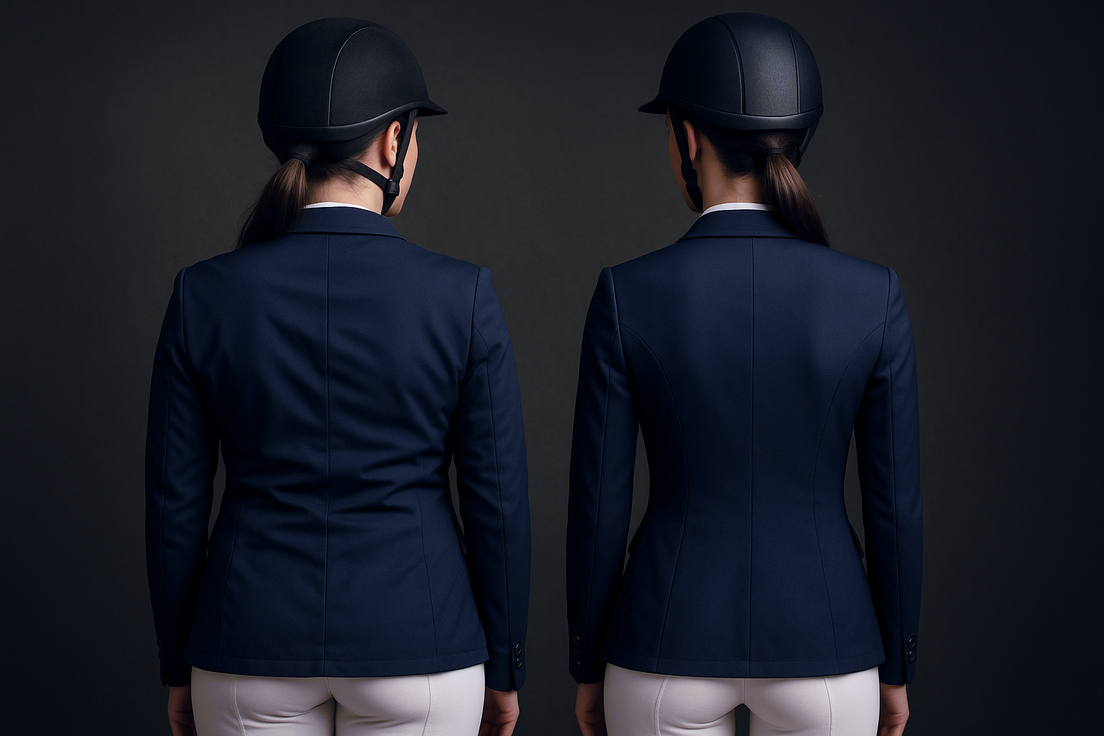
Here’s a story: I once designed a stunning jacket for a client—perfect color, elegant cut, beautiful embroidery. But when it arrived, the rider couldn’t raise her arms without the back pulling up. Total flop. Why? We used standard sizing instead of actual measurements.
Lesson learned: fit is everything.
Custom doesn’t mean “slightly adjusted off-the-rack.” It means tailored to the individual. And that starts with accurate measurements. Not guesses. Not “she’s probably a medium.” Real numbers. Shoulder width, sleeve length, torso height, hip circumference.
But even with perfect measurements, there’s an art to pattern-making. A jacket that fits a 5’2” rider shouldn’t just be a smaller version of one for a 5’10” rider. Proportions change. Armholes shift. Collar angles adjust. A good designer understands that.
And let’s not forget comfort zones. Some riders like a snug fit. Others prefer a bit of ease for layering. At Fexwear, we offer fit consultations—because one conversation can save you months of returns and re-dos.
Oh, and inclusive sizing? Non-negotiable. I’ve worked with riders from size 00 to 3X, and every one deserves gear that fits and performs. Custom is the only way to make that happen at scale.
Designing for Brand Identity: Beyond Just a Logo
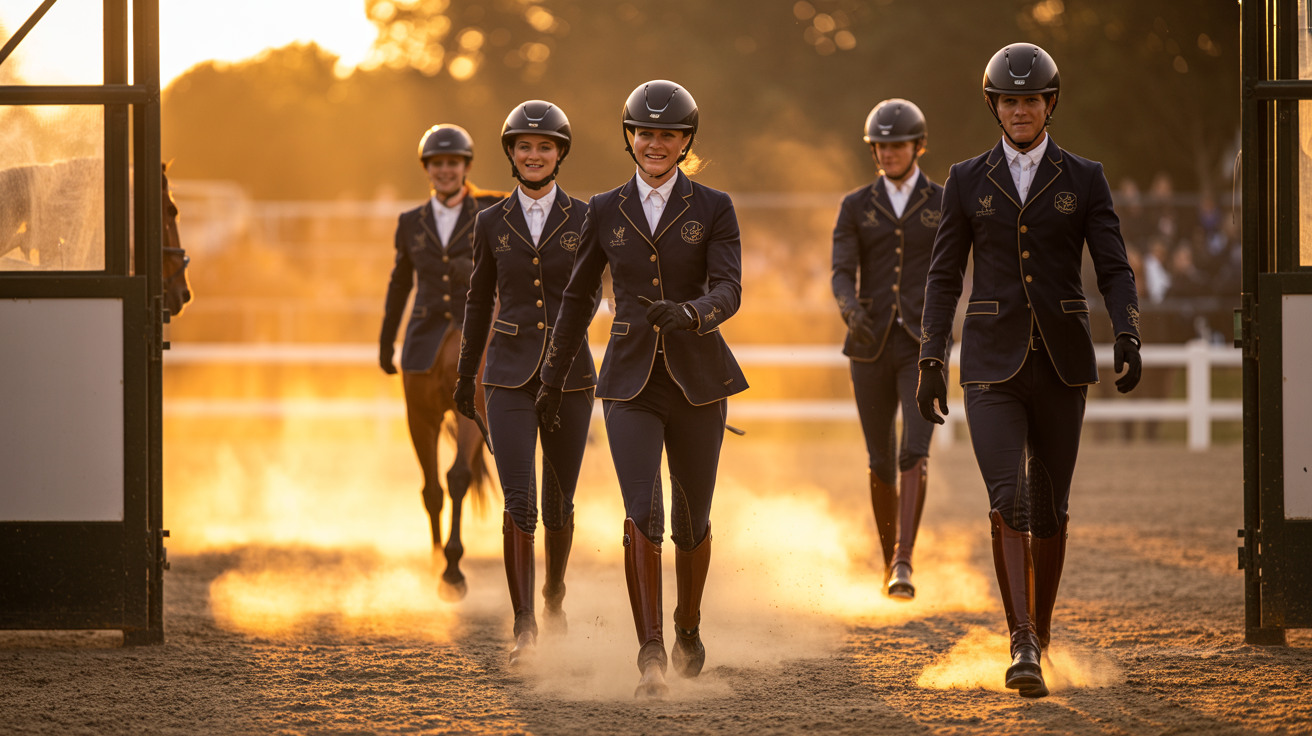
You can slap a logo on anything. But real branding? That’s deeper.
Think about what your stable or academy stands for. Is it tradition? Innovation? Excellence? Fun? Your equestrian uniform should reflect that.
I worked with a youth riding program that wanted to feel approachable and energetic. We went with bright teal, contrast piping, and a playful logo placement on the sleeve. Parents loved it. Kids felt proud. It became part of their identity.
Another client—a high-end dressage barn—wanted elegance and sophistication. We used deep navy, matte buttons, and a subtle embroidered crest on the chest. No flash. Just quiet confidence.
Color psychology matters. Red = energy. Navy = trust. Black = authority. White = purity. Choose wisely.
And placement? Don’t just default to the chest. Consider the back yoke, the cuff, the collar. A well-placed design element can elevate the whole look.
At Fexwear, we don’t just make clothes. We help you tell your story.
The Realities of Wholesale Equestrian Apparel
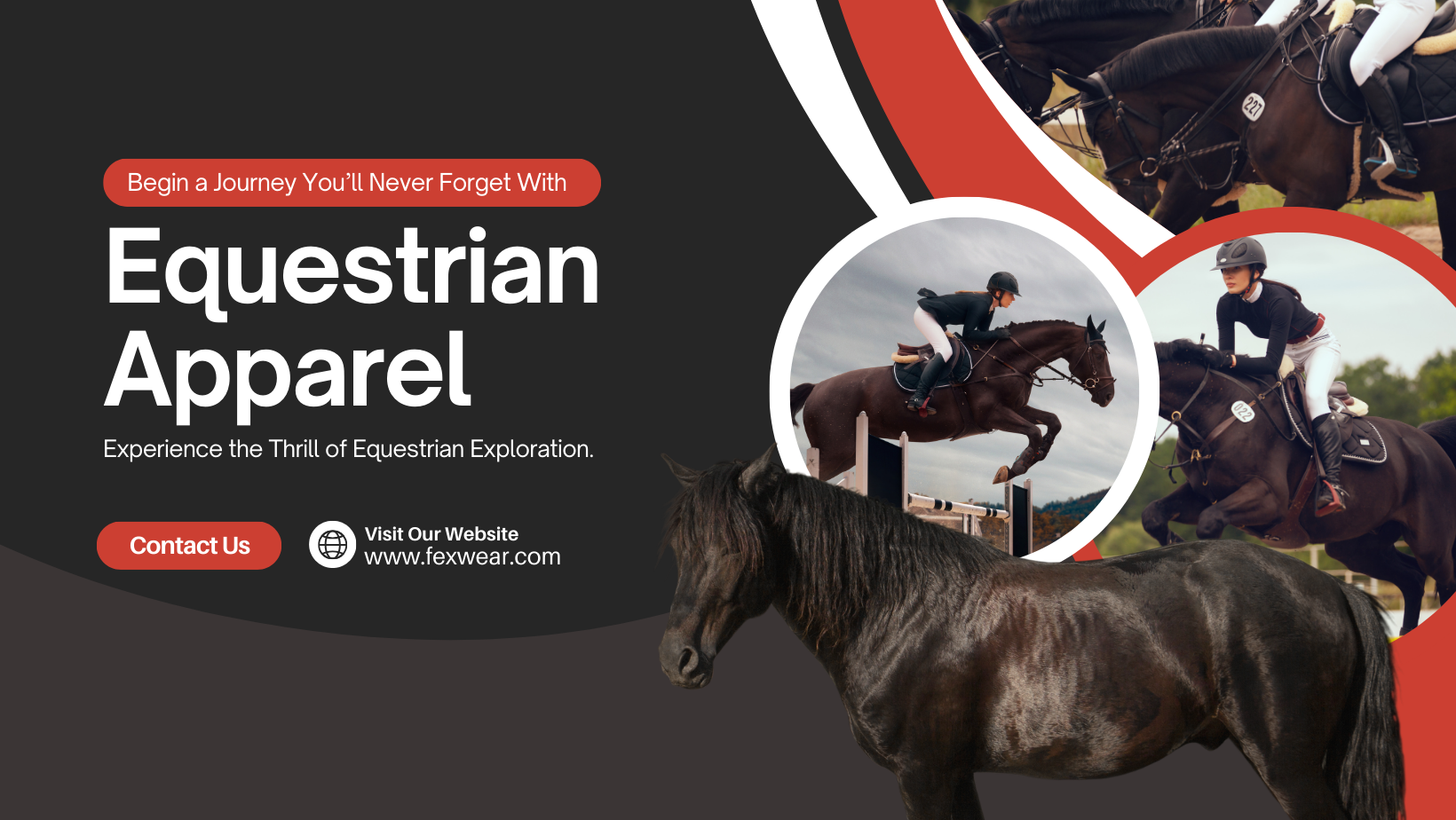
Let’s talk money—because if you’re buying in bulk, you need to know what you’re getting into.
First, MOQs (Minimum Order Quantities). Some suppliers demand 100+ units per style. That’s a huge commitment, especially if you’re testing a new design. At Fexwear, we keep our MOQs flexible—sometimes as low as 20 units—so you can scale without risk.
Second, pricing structure. Be careful of “low per-unit cost” traps. I’ve seen quotes that look great until you add in shipping, duties, and hidden fees. Always ask for a total landed cost.
Third, quality consistency. In wholesale, batch-to-batch variation is a real issue. One run of jackets might have slightly off-color zippers. Another might have uneven stitching. We combat this with strict QC protocols and in-line inspections.
And finally, lead time. If you’re planning for a competition season, don’t wait until March to order. Production, shipping, customs—it all takes time. Plan at least 12–16 weeks ahead.
Wholesale isn’t just about volume. It’s about partnership. Choose a supplier who treats you like one.
Common Mistakes When Ordering Custom Riding Gear
Let’s keep it real—everyone makes mistakes. Here are the big ones I’ve seen (and made):
- Skipping the sample: Never go straight to bulk production. Always test a physical sample. Digital mockups lie.
- Ignoring care instructions: If your riders can’t wash the gear easily, it won’t last. Build in washability from the start.
- Overcomplicating the design: More embroidery ≠ better. Sometimes simplicity wins.
- Forgetting the staff: Instructors and grooms deserve great gear too. Don’t make them feel like afterthoughts.
- Not planning for growth: Design with scalability in mind. Can you add new colors later? Expand sizes?
Learn from the missteps. They’re cheaper than reorders.
How to Work With a Manufacturer: The Partnership Mindset
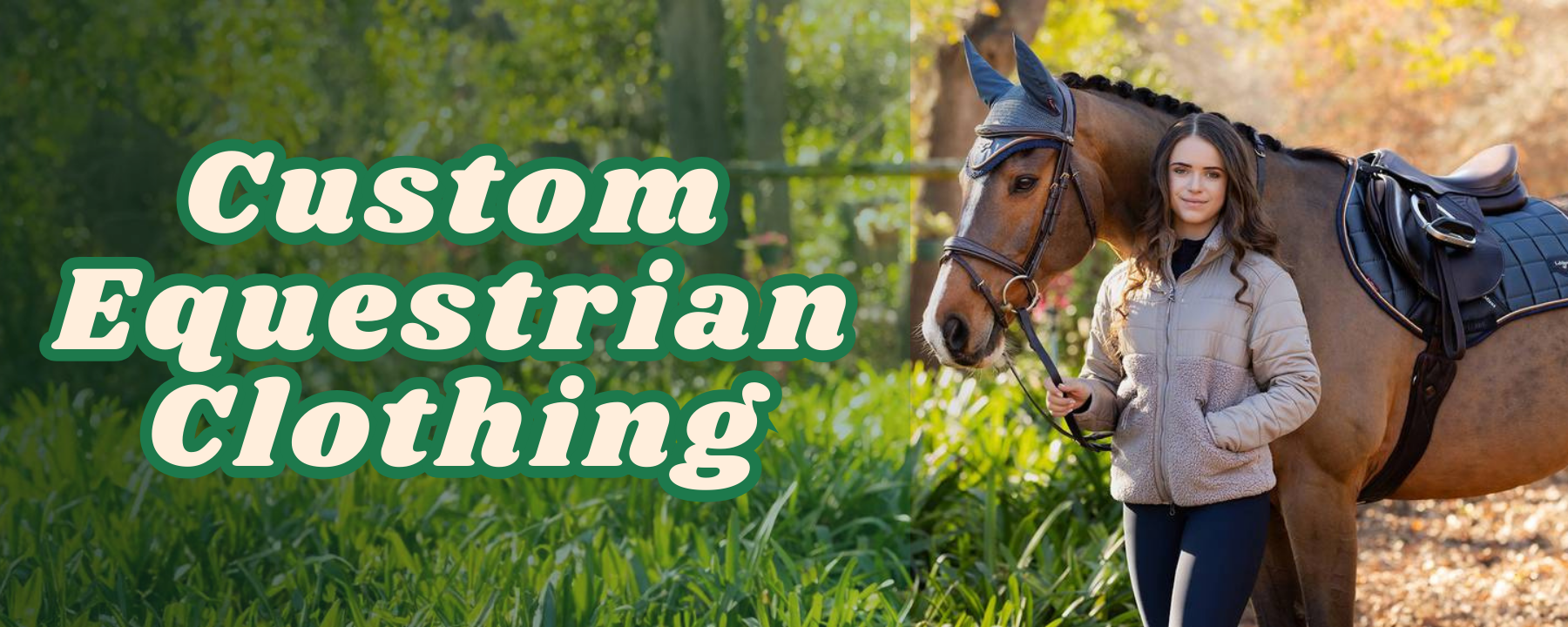
This isn’t a transaction. It’s a collaboration.
When you partner with a manufacturer like Fexwear, you’re not just placing an order. You’re starting a conversation. Share your vision. Ask questions. Push back if something doesn’t feel right.
A good manufacturer will:
- Offer fabric swatches and color matches
- Provide 3D mockups or tech packs
- Guide you on what’s possible (and what’s not)
- Be transparent about timelines and costs
And don’t be afraid to revise. The first sample is rarely perfect. That’s why it’s called a sample.
We’ve had clients come to us with rough sketches on napkins. We turned them into award-winning uniforms. All it took was trust and communication.
Sustainability in Equestrian Apparel: Is It Possible?
Let’s address the elephant in the ring: sustainability.
Can you make high-performance equestrian gear and be eco-conscious? Yes—but with caveats.
Recycled polyester is great. But it still sheds microplastics. Organic cotton breathes well but lacks durability. The sweet spot? Blends with recycled content, low-impact dyes, and responsible manufacturing.
At Fexwear, we’re not “greenwashing.” We’re making incremental changes—reducing waste, using eco-packaging, and offering sustainable fabric options where performance allows.
It’s not perfect. But it’s progress.
Case Study: How One Academy Transformed Their Image
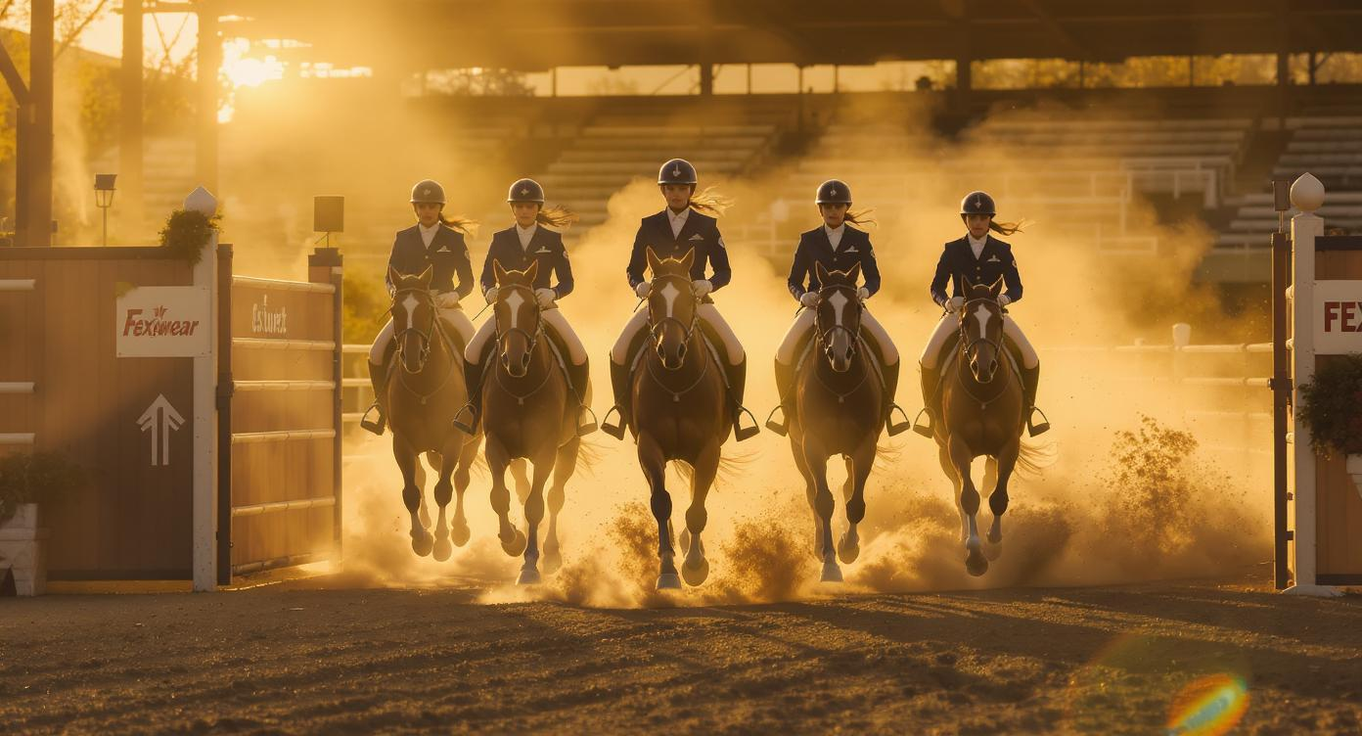
Let me tell you about Summit Ridge Equestrian. They were a solid mid-tier academy—good instructors, decent turnout, but invisible at shows.
They came to us wanting a refresh. We redesigned their entire equestrian uniform line: tailored navy jackets with silver piping, high-waisted breeches with subtle branding, and instructor vests in charcoal gray.
The result? Within a season, they were featured in Equestrian Life Magazine. Parents reported higher enrollment. And riders? They stood taller. Felt prouder.
Custom clothing didn’t fix their training program. But it amplified their professionalism. And that made all the difference.
The Future of Custom Equestrian Clothing
Where’s this all heading?
3D body scanning for perfect fit. Smart fabrics that monitor posture. On-demand production to reduce waste. The tech is coming.
But the core will always be the same: gear that serves the rider, the team, and the sport.
Custom equestrian clothing isn’t a luxury. It’s the next evolution of performance wear.
Final Thoughts: It’s More Than Just Clothes
At the end of the day, your riding gear is an extension of who you are. It’s your armor, your uniform, your statement.
Whether you’re a solo rider wanting a jacket that fits like it was made for you, or a stable manager building a brand, custom equestrian clothing gives you control. Over fit. Over function. Over identity.
And if you’re exploring wholesale equestrian apparel, remember: it’s not just about cost. It’s about consistency, quality, and partnership.
This isn’t a trend. It’s a shift. And the stables, schools, and riders who embrace it? They’re the ones who’ll stand out—not just in the arena, but in the minds of clients, judges, and sponsors.
So don’t settle for “good enough.” Demand better. Design better. Ride better.
Ready to start? Fexwear is here to help. From sketch to saddle, we’ve got your back.
FAQs
What is the minimum order for custom equestrian clothing?
Our standard MOQ is 20 units per design, but we can discuss smaller runs for prototypes or special cases.
How long does it take to produce a custom equestrian uniform?
Typically 8–12 weeks from final approval, depending on complexity and fabric availability.
Can you match my stable’s exact colors and logo?
Yes. We offer Pantone color matching and high-resolution embroidery or sublimation.
Do you offer private label services for retailers?
Absolutely. We specialize in private label and white-label solutions for equestrian brands.
What if the fit isn’t right after delivery?
We offer fit adjustments and reworks to ensure complete satisfaction. Your success is our priority.
Engagement Message
What’s your biggest challenge when it comes to riding gear? Is it fit? durability? branding? Drop a comment below or share this with someone who’s tired of off-the-rack compromises. Let’s start a conversation about what real custom equestrian clothing can do.

